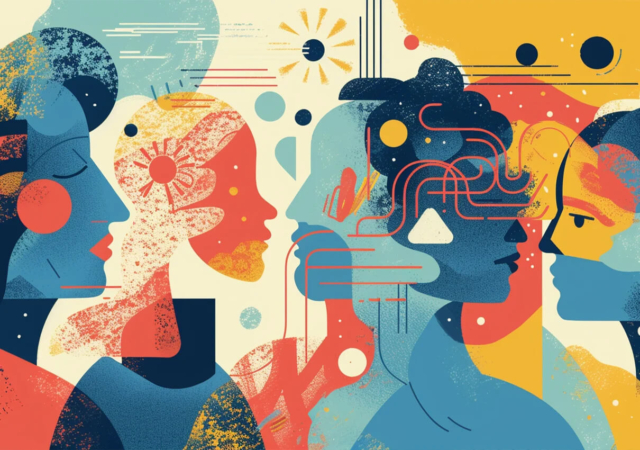The Role Of Workforce Analysis In Strategic Human Resource Management
The Role Of Workforce Analysis In Strategic Human Resource Management
Jul 9, 2024
Last updated on Jul 25, 2024
When we talk about workforce analysis, we're really talking about getting the best out of our people. This means making sure everyone is in the right role, has the right skills, and is working towards the same goals. It's like a football coach putting together the best team—not just a group of star players, but a group that works well together.

Workforce analytics is about understanding the big picture and the tiny details of what makes our employees tick. It’s about finding out what skills we have, what skills we need, and how we can help our people grow. By taking a comprehensive look at your human capital, you can identify areas for improvement and make data-driven decisions that optimize your workforce.
Aligning business goals with people strategy
In SHRM, strategic alignment is about embedding the human capital strategy within the organization’s mission and vision. A study by the American Productivity & Quality Center (APQC) showed that most organizations integrate workforce planning into their business operations.
Performance management systems track, predict, and shape behaviors that drive business success. These systems use data analysis to improve efficiency and create a culture where employee engagement is linked to achieving strategic goals.
Supporting business strategy
Supporting business strategy through talent deployment is an ongoing process of aligning human resources with changing strategic objectives. Advanced workforce planning techniques, such as predictive talent forecasting and workforce modeling, are essential when a company is about to expand or innovate.
These techniques use data insights to plan future talent needs, ensuring the organization’s talent pool is optimally aligned with strategic initiatives. For example, using talent analytics can improve the precision of matching roles to skills, making talent utilization more effective in critical projects.

Identifying skills gaps
Identifying skills gaps is a proactive measure in SHRM. It involves a thorough skills inventory that anticipates future skill requirements beyond current competencies. Gap analysis compares the current talent landscape with projected business scenarios to identify potential skill shortages or surpluses.
The results of this analysis inform targeted development programs, strategic recruitment, and organizational restructuring. Using internal talent data and labor market intelligence can identify emerging skill trends, allowing the organization to proactively develop or acquire these skills before they hinder strategic execution.
Enhancing employee development
In strategic HRM, employee development is about creating a personalized learning ecosystem aligned with organizational competencies. According to employee development statistics was originally published in 2021, 76% of employees seek career expansion opportunities, and organizations offering tailored learning paths see 34% higher retention rates among those engaged in professional development. Advanced learning technologies and methodologies craft career development programs that meet individual aspirations and fill competency gaps critical to business strategy.
Optimizing recruitment and retention
Understanding labor market dynamics is crucial for crafting effective recruitment campaigns. Offering e-learning opportunities can boost retention rates by 60%, highlighting the importance of integrating modern learning modalities into employer branding. Retention involves fostering an environment with data-driven, competitive compensation packages and recognition schemes reflecting the workforce’s motivations. The employee development statistics published in 2021 also shows that 86% of employees would switch jobs for roles offering more growth opportunities.
Facilitating succession planning
Succession planning in strategic HRM identifies potential leaders and the specific competencies required for future organizational challenges. It involves creating an agile leadership competency framework adaptable to evolving business needs. Best practices include starting early, planning continuously, developing formal succession plans, and involving senior leadership. This ensures a pipeline of high-potential employees prepared for leadership roles, guaranteeing continuity and stability during transitions.
Enhancing diversity and inclusion
Diversity and inclusion (D&I) are strategic imperatives driving innovation and performance. Companies with diverse executive teams are 27% more likely to outperform peers on profitability.
HR’s role involves conducting diversity audits assessing the inclusivity of the work environment, implementing inclusive hiring practices using AI-driven tools to reduce bias, and establishing employee resource groups (ERGs).
Bias training should be part of a continuous learning journey, reflecting the organization’s commitment to an inclusive culture.

Improving workforce agility
Workforce agility is the cornerstone of a resilient organization, enabling swift pivots in response to market dynamics. Agile organizations have reported up to 30% gains in operational performance. HR’s strategic contribution lies in developing flexible workforce strategies, such as cross-training programs and dynamic role assignments, enabling rapid scaling and adaptation. Predictive analytics anticipate skills needed for future industry trends, ensuring the organization remains competitive in a fluctuating labor market.
Informing HR policies
HR policies align the workforce with the organization’s long-term objectives. Strategic HR involves regular policy audits and stakeholder consultations to ensure compliance with legal standards and the embodiment of core values and strategic goals.
Performance management systems should reinforce strategic priorities, encouraging behaviors that contribute to broader business objectives. HR must navigate global compliance complexities, adapting policies to local regulations while maintaining a cohesive global
In the end, workforce analytics in HR isn’t just good for the here and now; it sets us up for the future. It’s about making sure we have the right people ready to step up when we need them, whether that’s for a new project or to take over a key position. If you want to know more about how this works in practice, or if you need help getting started, Talentnet is here to guide you. With deep understanding of workforce analysis and years of experience, our HR consulting & HR outsourcing services can provide the support you need to unlock the full potential of your organization’s most valuable asset – your people.

Solve your HR problems!
6th Floor, Star Building, 33 Mac Dinh Chi, Saigon Ward, Ho Chi Minh city, Vietnam




